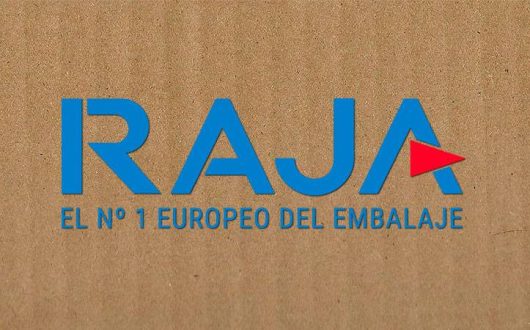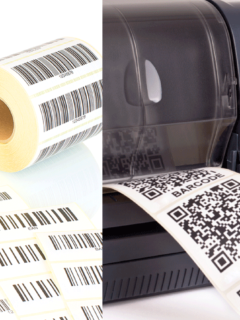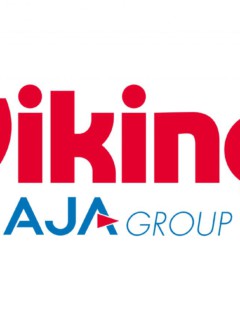Handing over the keys can quickly become a challenge for companies, vehicle fleets or holiday homes. There is often a lack of an efficient and secure solution to organise the process of handing over the keys. But this does not have to be the case! In this blog, we will show you simple ways to organise the handover of keys in your company or holiday home in a flexible and staff-independent way. You have the key position in your hand!
This is what you can expect in this blog post
- Handing over the keys in companies
- Handing over the keys to new employees
- What should a key handover protocol look like?
- Handing over keys in shift work, to suppliers and to external service providers
- Who is liable if the key is lost or damaged?
- Electronic key handover in the vehicle fleet
- Contactless key handover for holiday homes
Handing over keys in companies
Whether entrance door, conference room, security-relevant buildings and areas, server room, warehouse, cellar, garage... keys, chip cards or other means of access exist in every company. Depending on the area of responsibility, employees and external service providers need different access authorisations. Some accesses are needed for as long as the employment relationship lasts, others are only necessary temporarily. To keep track of this, you need good key management. So how does good key management work?
To begin with, an inventory is helpful for key management
Do you need to manage the keys in your business or company? To counteract key chaos, you should first clearly define important “key” information. These are used as the basis for optimised key management and correct key handover. Depending on the scope, a classic Excel spreadsheet or special key management software is suitable for this purpose.
You should be able to answer these basic questions:
Which keys are there in the company? In addition to the obvious doors, lockers and safes, vehicles and machines may also be lockable. It is important to know the exact number of keys, smart cards and tokens and their purpose. For key management purposes, clearly label the access means in each case and note their purpose. The goal: Each issued key should be clearly identifiable. In this way, you can react quickly in the administration in the event of loss or a change of staff.
Where are these keys kept? Is there a central administration office? Or does it make more sense to keep the keys near the point of use, such as in the hall where the machines are located? Where are access means that are used by several people stored? Often a flexible solution such as key boxes can be used here.
Who hands over the access equipment? Is a personal handover always possible? Or should the handover take place independently of time by securely depositing the keys, for example in key safes?
Who may access the keys, when and to what extent? Will the keys be issued permanently? Or only for temporary use, such as during shifts or for the use of certain machines? And: Who is generally allowed to have access to the keys?
What are the requirements for key use? For example, may a certain access only be used temporarily? Are employees allowed to share access codes or keys with each other? Are there rules for key storage? It is important to document these guidelines in a comprehensible way and to have them signed by everyone involved, for example with the help of a key log. This applies not only to the handing over of keys, but also to the allocation of access codes, etc. (more on the key protocol under “Handing over keys to new employees”).
You may quickly realise that your administration has reached its limits with the current key management or could at least be optimised. Practical solutions such as key management software for key administration and options for flexible and contactless key handover, such as key safes, are important helpers that make your organisation much easier.
Handing over keys to new employees
A good start for new employees in the company also includes a smooth handover of keys. After all, what better way to welcome someone than by handing them the means of access to their new workplace? In order to clearly document which means of access were granted and to what extent, you should record all regulations in a key handover protocol. This gives both you and your new employees security.
Tip: If you issue access codes for doors or key boxes in addition to keys, you should also record these in the key handover protocol. In addition, you should record there whether and to what extent the pin codes and keys may be passed on.
What should a key handover protocol look like?
There are no legal requirements. An informal letter signed by both parties is sufficient. One version of the document is retained by the company, one version is given to the new employee as a “key receipt”. However, you should ensure that all relevant information is included in the form.The information in the key receipt includes at least:
- Name and address of the company
- Name and place of residence of the employee
- Number and unique designation of keys and means of access
- Permitted scope of use and duration of use
- Notes on liability, e.g. in the event of loss or improper use
- Signature of both parties confirming the handover of keys
If you have to manage many key handovers, it is worthwhile to create a key protocol template that you only have to modify for the respective situation. You can also find templates and samples as Word documents or Excel files online, some of which you can adopt free of charge. However, you should always adapt a template as precisely as possible to your application.
If different people need to have access to a certain area or machine at different times, flexible key management is essential. You can, of course, create and distribute a large number of key copies. However, this increases the risk of an inattentive employee losing the key or gaining access to the area or machine when they shouldn’t. Or they need to rely on the fact that different people have access at different times. Or they have to rely on timings being precisely adhered to so that a personal handover is possible. Then, however, it must also always be ensured that each area is staffed at all times. In times of growing staff shortages, this is almost impossible to achieve. Especially when there are delays, late arrivals or absences due to illness, this can lead to resentment and problems. If deliveries or cleaners arrive late in the evening or early in the morning before most of the permanent staff, it becomes even more complicated.
To ensure smooth business operations, it is important to establish a flexible, person-independent key handover system.
In
this way, you ensure that only the people who are supposed to have access at the right time have access – and that they also get it in case of staff absences
.
There are various groups of people for whom the key management system makes sense. Among others:
Handing over the keys in shift work
Shift workers often literally hand over the keys to each other. Usually it is ensured that there is enough time to hand over access keys for halls, machines and the like personally. However, there can quickly be discontent if, for example, shift workers have to wait for their replacement at the end of their shift. In addition, the secretary’s office, the security service or a receptionist is not necessarily present at all times.
Employees are much more flexible if they can deposit their keys and accesses in a key safe at the end of their shift, where they can collect them again before the start of their shift using their personal numerical code. Intelligent key safes such as the Bluetooth key safe from MASTER LOCK can be programmed with individual pins. This way, each employee can be assigned their own code.
Via an app, the key managerhas an overview of which code was used to open the safe and when. Ergo: which employee removed the access means at which time. This also offers you remote insight into the work of your employees and also greater security, because: If a key does not return to its place, you know exactly who was the last person to access the key safe.
In smaller, family-run businesses, a key box with analogue number wheels and the same combination of numbers for everyone with access may also be sufficient. These are much cheaper and do not need to be charged, but offer less transparency. We recommend that if you have a key safe with a combination lock, you hang a withdrawal list next to the key box or nearby. In this simplified version of a handover protocol, everyone should enter their name, date and time and sign out again when they remove or return the key. This way you can keep an overview even without an app.
Issuing keys to service providers such as security guards or cleaners
Whether it’s a security service, external facility management, cleaning staff or tradesmen: You may not want to give your own access to external service providers in particular. However, these groups of people are often not on site during regular working hours, for example, so as not to disturb normal business operations. Nevertheless, you want to have an overview of when external service providers are in the building.
Here, too, the Bluetooth key box is particularly suitable. Your advantage: In addition to individual pins, you can also assign them only with time-limited access rights. The opening rights can either exist in certain time periods per day (e.g. always between 6 a.m. and 9 a.m.) or only for a certain time period (e.g. from now on for four hours). In this way, you can safely limit access even if you or other colleagues are not on site to check. The codes, as well as their authorisation of use and guidelines for passing them on to third parties, the time limit and the return of the keys to the box should be regulated in writing and signed by both parties (see item Key handover protocol).
Key issue to suppliers
You receive a delivery from your trusted supplier at an agreed time and you yourself, or a colleague who could supervise the delivery, are not on site? In this case, it also makes sense to have temporary access via an individual code in a key box. You can then transmit this combination of numbers to the supplier, e.g. by telephone or by encrypted e-mail. This way, suppliers can efficiently unload their goods or similar, even if they arrive too early or too late. Without anyone having to wait on site. Via the app of the key safe, you can see directly when the code was entered and can also revoke the access authorisation afterwards.
Just in case: Emergency key
Hand on heart. No human being is perfect. Despite key handover protocols and key management via a key safe, mistakes can happen. After a stressful day at work, the key may not find its way back to the key box and be taken away by mistake. Or the numerical code is forgotten. We therefore always recommend that you leave an additional emergency key in a secure key depot, such as a central key box with a combination lock. This way you are also prepared for special situations.
Who is liable if the key is lost or damaged?
To avoid disputes later on, the liability of employees in handling access means should be recorded in the key handover protocol. If no further agreements are made when handing over the keys, the following legal principles apply:
In the event of gross negligence, the employee is fully liable for the loss of or damage to the key and must bear all costs incurred in connection with the handed-over key. Costs may arise, for example, from replacing the entire locking system or a lock, blocking a chip card or making a replacement. This applies, for example, if the key is left unattended in an unprotected place and the key is stolen or lost as a result. Safekeeping of the key should always be ensured.
In the case of moderate negligence, the employee is liable on a pro rata basis and must contribute to the costs of repairing the damage. If, for example, a person sends a key by registered mail and it is lost, there is no intent or gross negligence because he or she used security measures (registered mail).
In the case of slight negligence, the duty of care is only slightly violated. Here, the employee only has to contribute to the costs if the company insurance does not take effect. This is the case, for example, if the key is in the car and this car is stolen. But also, for example, if a key safe is broken into after the employee has properly returned the key to the key safe and locked it.
Normally, a user isnot liable for reimbursement if the key handed over shows normal wear and tear. Especially over a longer period of time, scratches or worn key beards are an expected, age-related condition. Nevertheless, every user is obliged to take care of the work equipment given to him.
Excursion: Employer’s duty of care and protection of employee’s belongings
It is not only employees who have a duty to keep internal company rooms, machinery and vehicle fleet etc. securely locked and to handle them properly. Employers also have a duty of care to ensure that employees can keep their personal valuables and work equipment safe during working hours.
In many workplaces, for example, employees are required to wear special protective equipment or work clothing. In this case, they must be provided with lockable lockers for private items such as car and front door keys, wallets, smartphones and clothing. These can be safely secured with a padlock with a numerical code, for example.
Your advantage: employees do not have to carry a key with them, which is especially important in hygiene-sensitive environments such as food production.
Electronic key transfer in the vehicle fleetIn the company’s own fleet for business trips or in the car rental business: electronic key management ensures flexibility in terms of time. Whether early or late arrival and departure times, night flights or delays due to traffic jams and the like – it cannot always be guaranteed that staff will be on site to hand over or receive the car.
Especially when returning the keys before or after normal working hours, the car key can simply be deposited by the driver in an intelligent key safe. Not only the return, but also the issue can work contactless: A key safe with individual codes and the relevant car keys is also quickly prepared before closing time. Via app, the responsible fleet manager is automatically informed about the opening of the safe and thus about the key return or key removal.
A flexible and contactless key handover is a great gain in work quality in fleet management, especially in times of pandemics and staff shortages.
Contactless key handover for holiday homes
In the hospitality industry, holiday flats and houses are becoming increasingly popular. Unlike hotels, however, these do not offer a lobby with service staff to assist with check-in.
If you are a landlord of flats yourself, you are certainly familiar with the problem: handing over the flat key in person is particularly safe and appears very hospitable to the recipient. However, handing over the keys becomes difficult at the latest when the guests are late or you have other obligations as a landlord. Leaving the flat key in the café next door also means that guests can only check in during its opening hours. At the latest, if external people such as a cleaning service still need access, or you are aiming for commercial use with several flats, you need to rethink the procedure for the rental processes.
Key safes are now a suitable and widely used tool in the rental of a holiday flat or holiday home. The robust safes are mounted on the house wall and can be opened by means of an individual number combination. Some electronic key safes even offer the option of generating the pin code remotely and setting different validity periods, which is particularly advantageous for cleaning staff.
However, you should note that burglars are trained to look for key boxes, especially in large premises. 100% protection against theft cannot be guaranteed, as a key safe can be opened with some effort.
Our tip: invest in a high-quality key safe and mount this safe on the property so that it is not directly visible from the outside. You should also make sure that it is easy for the user to operate, even in the dark. Weather resistance is also an important factor, as harsh weather conditions can affect the function of lockers. Key safes with illuminated number wheels designed for outdoor use are the ideal choice here.
Another advantage: Some rental platforms already offer the “contactless check-in” option for users. This has proven itself at least since the last pandemic. If the check-in is contactless, many guests also appreciate the time-independent arrival.

















